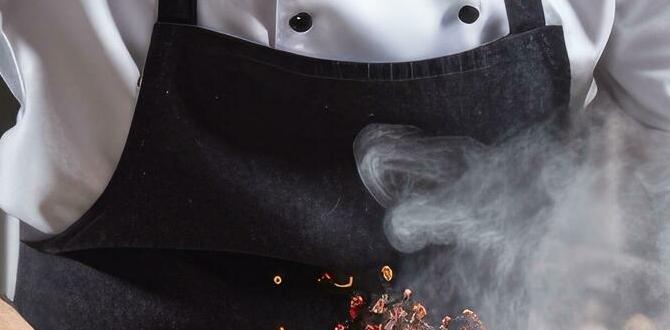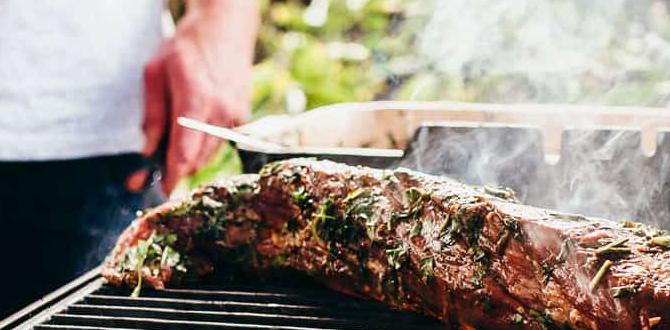Embark on a delightful journey with tea estate tours! Discover lush landscapes, learn about tea cultivation and processing, and savor the freshest brews. This guide unlocks how to plan the perfect tea adventure, from choosing a destination to enjoying your immersive experience.
Imagine walking through endless rows of vibrant green tea bushes, the crisp air filled with a subtle, earthy aroma. Tea estate tours offer just that – a chance to connect with nature and understand the magic behind your favorite cuppa. It can feel a little overwhelming to plan, especially if it’s your first time.
But don’t worry! This guide will walk you through everything you need to know. We’ll help you pick the perfect tea tour, pack smart, and make the most of every moment. Get ready to explore the fascinating world of tea!
Why a Tea Estate Tour is a Must-Do Experience
A tea estate tour isn’t just a holiday; it’s an enriching experience that goes way beyond a simple cup of tea. It’s a sensory journey that connects you directly to the source of one of the world’s most beloved beverages.
- Deepen Your Appreciation: Understanding the intricate process from leaf to cup fosters a newfound respect for the craftsmanship involved.
- Connect with Nature: Immerse yourself in stunning, often untouched, natural landscapes that are as beautiful as they are serene.
- Cultural Immersion: Many tea regions offer a glimpse into local traditions, the lives of tea pluckers, and the history of tea cultivation.
- Taste the Freshest Brews: Savor teas that are often exclusive to the estate, brewed on-site shortly after harvesting – an unparalleled flavor experience.
- Learn a New Skill (or Hobby!): Discover the nuances of tea varieties, brewing techniques, and perhaps even try your hand at plucking a few leaves.
Choosing Your Perfect Tea Destination
The world is dotted with incredible tea-growing regions, each offering a unique flavor profile and tour experience. Your choice might depend on the type of tea you love, the scenery you prefer, and the kind of adventure you’re seeking.
Iconic Tea Regions to Consider
- India: Famous for Darjeeling (the “Champagne of Teas”), Assam (robust black teas), and the Nilgiri Hills (aromatic teas). Expect lush plantations, colonial bungalows, and diverse wildlife.
- Sri Lanka (Ceylon): Known for its distinctive black, green, and white teas. Tours here highlight varied altitudes and stunning scenic beauty, often with waterfalls and misty mountains.
- China: The birthplace of tea! Explore regions like Yunnan (Pu-erh) and Fujian (Oolong, white teas). Experience ancient tea ceremonies and varied terroirs.
- Japan: Renowned for its exquisite green teas, especially Matcha and Sencha. Tours focus on meticulous cultivation, traditional processing, and unique tea ceremonies.
- Kenya: A significant player in black tea production, offering a different insight into large-scale tea farming and processing.
Factors to Consider When Selecting a Tour
To make sure your tea estate tour is everything you dreamed of, think about these key elements:
- Type of Tea: Are you passionate about black tea, intrigued by green tea, or an Oolong aficionado? Some estates specialize.
- Landscape and Scenery: Do you envision rolling hills, misty mountains, or lush tropical plantations?
- Accommodation: Some estates offer charming guesthouses or heritage bungalows right on the property, providing an immersive stay.
- Activities Offered: Beyond tea tasting, some tours include guided nature walks, visits to tea factories, cooking classes, or cultural performances.
- Time of Year: Tea harvesting seasons (flushes) vary by region and can affect the tea’s flavor and the landscape’s appearance. Research the best time to visit your chosen destination. For instance, the delicate first flush of Darjeeling tea is typically harvested in spring.
- Duration: Do you want a half-day tasting or a multi-day deep dive into tea culture?
Planning Your Tea Estate Tour: A Step-by-Step Approach
Once you have a destination in mind, it’s time to get practical. A little planning goes a long way in ensuring a smooth and enjoyable trip.
Step 1: Research and Book Your Estate Visit
Start by researching specific tea estates within your chosen region. Look for estates that offer guided tours and tastings.
- Online Research: Use search engines with terms like “[Region Name] tea estate tours” or “[Estate Name] visitor experience.”
- Check Estate Websites: Many estates have websites detailing their history, tea types, and visitor packages.
- Read Reviews: See what other visitors have to say about their experiences.
- Booking: Book your tour in advance, especially during peak season. Some estates have online booking, while others might require an email or phone call.
Step 2: Arrange Transportation
Getting to the tea estate is a crucial part of the adventure. How you reach it can be as scenic as the estate itself!
- From Major Cities: You might need to fly into a major city and then arrange for a taxi, rental car, or local bus to reach the tea-growing region.
- Hiring a Driver: For remote estates, hiring a local driver for the day or for your entire trip can be convenient and allow you to enjoy the sights without worrying about navigation.
- Public Transport: In some countries, local buses and trains connect towns to tea-growing areas, offering a more authentic, budget-friendly experience.
Step 3: Consider Accommodation
Where you stay can significantly enhance your tea estate experience.
- On-Estate Stays: Many estates offer charming guesthouses or heritage bungalows. This is the most immersive option, allowing you to wake up amidst the tea gardens.
- Nearby Hotels/Guesthouses: If an on-estate stay isn’t available or suitable, look for accommodations in nearby towns. This might offer more dining options.
- Homestays: In some regions, you might find local families offering homestays, providing a unique cultural exchange.
Step 4: Pack Accordingly
Comfort is key to enjoying your exploration. Pack for the climate and the activities you’ll be doing.
| Item Category | Suggested Items | Why it’s Important |
|---|---|---|
| Clothing | Comfortable walking shoes, layers (light sweater/jacket), rain gear (if applicable), hat, sunglasses. | For exploring uneven terrain, varying temperatures, and sun protection. |
| Health & Safety | Sunscreen, insect repellent, personal medications, hand sanitizer. | Essential for comfort and well-being outdoors. |
| Documents & Money | ID, booking confirmations, cash, credit/debit cards. | For identification, payment, and emergencies. |
| Other Essentials | Camera, reusable water bottle, small backpack. | To capture memories, stay hydrated, and carry essentials. |
What to Expect During a Tea Estate Tour
A typical tea estate tour is designed to be educational and enjoyable. While specifics vary, most tours cover a similar, delightful arc.
1. The Welcome and Introduction
You’ll usually be greeted by a guide who will share a brief history of the estate and the significance of tea cultivation in the region. This sets the stage for your exploration.
2. Walking Through the Tea Gardens
This is often the highlight! You’ll walk among the neatly manicured tea bushes, learning about different varietals and the art of plucking. Your guide will explain how to identify the tender young leaves and buds that are crucial for quality tea.
The methods of harvesting tea have a significant impact on the final product. For example, in many regions, only the top two leaves and a bud are hand-plucked, a process that requires great skill and care. This selective plucking ensures the highest quality leaves are used. You can often get a chance to try a few plucks yourself!
One fascinating aspect is understanding the different “flushes” or harvest seasons. The first flush, harvested in spring, often yields lighter, more delicate teas, while later flushes can result in teas with bolder flavors. For more on the different types of tea and their harvest, this resource from the UK Tea & Infusions Association offers excellent insights.
3. The Tea Factory Visit
After plucking, you’ll typically visit the processing factory. Here, you’ll witness the transformations that turn fresh leaves into your favorite beverage.
- Withering: Freshly plucked leaves are spread out to lose moisture.
- Rolling: This breaks the leaf cells, initiating oxidation.
- Oxidation (Fermentation): The degree of oxidation determines the tea type (e.g., green tea is unoxidized, black tea is fully oxidized).
- Drying/Firing: This stops the oxidation process and reduces moisture content for storage.
- Sorting: Teas are graded based on leaf size and quality.
Seeing these stages firsthand, often with historical machinery still in use, is incredibly enlightening.
4. Tea Tasting (The Grand Finale!)
This is where you get to savor the fruits of the labor. You’ll be guided through a tasting session, learning how to appreciate the aroma, color, and flavor profile of different teas produced on the estate. Often, local snacks that pair well with tea are served too.
Did you know that the water temperature and steeping time are crucial for getting the best flavor from your tea? For delicate white or green teas, cooler water (around 70-80°C) and a shorter steep of 1-2 minutes is best. Black teas can handle hotter water (around 95-100°C) and a longer steep of 3-5 minutes. This information is often shared during estate tastings and is a great takeaway for your home brewing!
Making the Most of Your Tea Experience
To truly maximize your enjoyment and learning, consider these tips:
- Ask Questions: Don’t be shy! The guides are passionate about tea and eager to share their knowledge.
- Engage Your Senses: Smell the leaves, observe the colors, feel the textures, and truly savor the flavors.
- Take Notes: Jotting down observations about different teas and processing methods can be helpful for future reference.
- Purchase Local Tea: Buying directly from the estate ensures you get fresh, high-quality tea and supports the local community.
- Respect the Environment: Follow marked paths and be mindful of the delicate ecosystem.
- Be Open to New Flavors: Step outside your comfort zone and try teas you might not usually pick.
Beyond the Tour: Continuing Your Tea Journey
Your tea estate tour is just the beginning. You can continue to explore the world of tea from your own kitchen.
- Home Brewing: Experiment with different brewing methods and tea types. Learn about the water quality, steeping duration, and temperatures that best suit each variety. For a deep dive into brewing techniques, resources from university extension programs like those at Cornell University can offer fascinating scientific perspectives.
- Explore Tea Accessories: Invest in a good teapot, infuser, and cups to enhance your daily ritual.
- Read Books: Delve deeper into the history, culture, and science of tea.
- Join Online Communities: Connect with other tea enthusiasts to share experiences and tips.
- Visit Local Tea Shops: Many specialty tea shops offer tastings and expert advice.
Frequently Asked Questions About Tea Estate Tours
Q1: How much does a tea estate tour usually cost?
Costs vary widely depending on the region, estate, and what’s included. Simple tours with tastings might range from USD 5-20, while longer experiences with accommodation and meals can be USD 50-200+ per person. Always check the estate’s website for current pricing.
Q2: Do I need to be a tea expert to enjoy a tour?
Absolutely not! Tea estate tours are designed for everyone, from curious beginners to seasoned tea lovers. Guides are there to share their knowledge in an accessible way.
Q3: What is the best time of year to visit a tea estate?
The “best” time often depends on the region and what you want to see. Generally, sunny periods with lush green plantations are ideal. However, the harvesting season (or “flush”) can be an exciting time to visit, as you’ll witness active plucking and processing. Misty seasons can offer atmospheric beauty, while dry seasons might be more comfortable for walking.
Q4: Can I pick tea leaves myself?
Most tours offer an opportunity to try hand-plucking a few leaves under the guidance of an expert. It’s a fun and insightful experience!
Q5: What should I wear for a tea estate tour?
Comfortable walking shoes are a must, as you’ll be walking on uneven terrain. Wear layers, as temperatures can change, and consider a hat, sunglasses, and rain gear depending on the climate and season. Light, breathable clothing is generally recommended.
Q6: Are tea estate tours suitable for children?
Many tea estates are family-friendly. The walking tours and seeing the tea factories can be engaging for children. However, some factory machinery might require supervision, and it’s always best to check with the estate directly if you have young children.
Q7: What’s the difference between hand-plucked and machine-plucked tea?
Hand-plucking involves skilled workers carefully selecting the tender leaves and buds, ensuring the highest quality and consistency. Machine-plucking, used in some large-scale operations, can be faster but may result in less selective harvesting. The artisanal touch of hand-plucked tea is highly valued for superior flavor and aroma.
The world of tea is vast and incredibly rewarding to explore. A tea estate tour offers a unique chance to connect with the origins of this special beverage, immerse yourself in beautiful landscapes, and gain a deeper appreciation for the craft and culture surrounding tea. By planning ahead and keeping an open mind, you’re set for an unforgettable adventure.
Whether you’re drawn to the misty hills of Darjeeling, the rolling plantations of Sri Lanka, or the ancient traditions of China, a tea estate tour promises a sensory delight. So, pack your bags, bring your curiosity, and get ready to discover the magic held within those vibrant green leaves. Happy travels and happy sipping!





